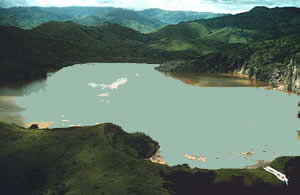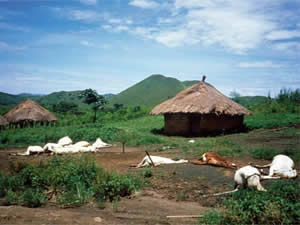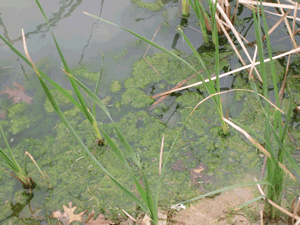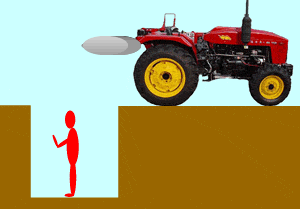Lake Nyos, in Cameroon, is an active crater lake that was formed by an eruption about 500 years ago. Lake Nyos is 230 m deep and is a stratified lake. Stratification (layering) occurs as the surface layer of water is heated by the sun while the bottom layer of water remains cold. In deep lakes extreme pressure, in deep water, allows for the accumulation of dissolved gases. As the lake cools during winter and the temperature becomes uniform throughout the lake, it loses its thermal stratification (layering) and the gas rich water comes to the surface where the gas is released into the atmosphere.
In the tropics, however, where temperatures vary little throughout the year, lakes remain permanently stratified. This allows for the accumulation of gas in deep water.

It is believed that carbon dioxide from underground volcanic activity finds its way into the depths of lake Nyos where it dissolves and accumulates under great pressure. At 9:30 pm on August 21, 1986 a cloudy mixture of water and carbon dioxide escaped violently from the lake and rose 120m above the surface of the lake. This silent, lethal cloud swept 16 km down the adjacent valley where it killed 1700 people and wiped out an entire village. Carbon dioxide gas is 1.5 times more dense than air and so it hugged the ground as it flowed over the terrain.
An event caused the deep layer of water, concentrated with gas, to come to the surface. This was like opening a shaken bottle of carbonated drink which released 1 billion cubic metres of carbon dioxide.



Form carbon dioxide by pouring vinegar into the baking soda (sodium carbonate). Tip the beaker so that the gas produced sinks into the trough with the candles.
Which candle goes out first? Why?
Click to see a 300kb video of the demonstration

The properties of carbon dioxide that caused this disaster are:
-
-
-
-

This is for senior Chemistry.
Using Le Chatelier's Principle explain how the equilibrium shown CO2(g) <=> CO2(aq) behaves as the carbon dioxide concentrated water moves to the surface of the lake and why bubbles appear when a bottle of carbonated drink is opened.